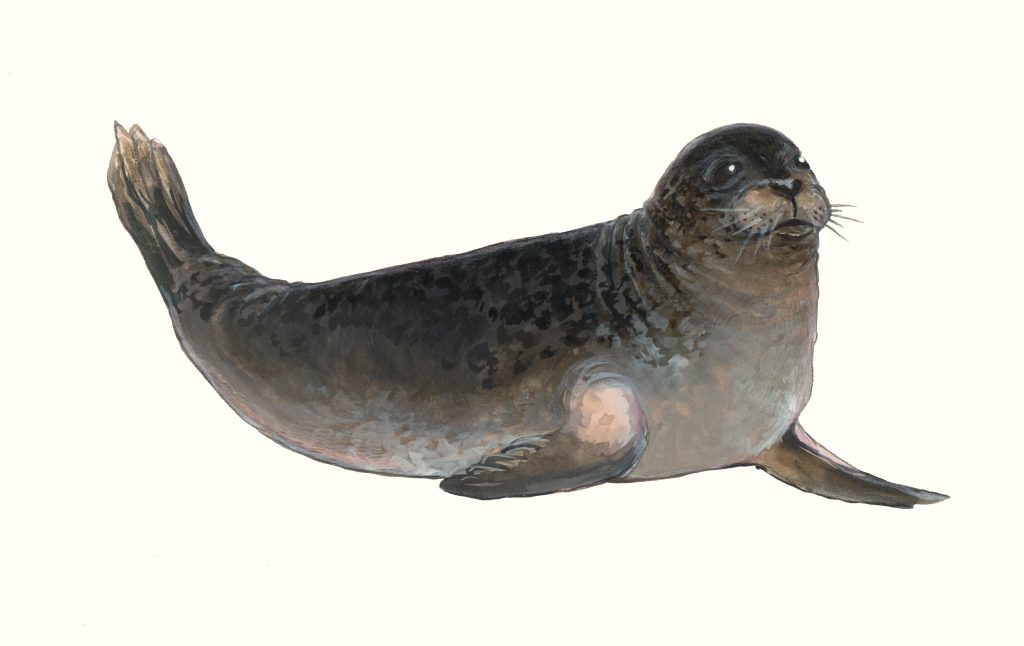The Harbor Seal (Phoca vitulina), also known as the common seal, is using its uniquely beaded whiskers to trace the faintest ripples in the water.

| Habitat | Coastal waters, estuaries, and rocky shores of the Northern Hemisphere, including the North Atlantic and Pacific Oceans, Baltic, and North Seas |
|---|---|
| Size & Weight | Males: 1.6–1.9 meters long, 80–170 kg; Females: 1.6–1.7 meters long, 60–145 kg |
| Status | Least Concern, but faces threats from habitat degradation, pollution, entanglement, and climate change |
Why do harbor seals need our help?
- Human disturbance can cause seal pups to be abandoned, and frequent disturbances can drain seals’ energy reserves, disrupting their ability to rest, hunt effectively, and maintain overall health.
- Marine debris like fishing gear is a threat especially to curious and playful juvenile harbor seals who can get easily entangled
- Phocine distemper virus has decimated harbor seal populations in the past (up to an estimated 51%!), and its severity might be affected by pollutants and other human-induced factors. Today, other diseases have impacts on the stressed immune systems of seals, with bird flu being a recent concern.
- Parasites, such as lungworms, pose a significant threat to juvenile harbor seals, especially when their immune system is weakened by human disturbance or nutritional stress due to prey depletion
- Climate change affects ocean habitats, and can have several impacts on harbor seals such as shifting pupping seaons, affecting their immune system or the availability of prey
Who helps harbor seals?
Harbor seals are shedding their lanugo (white fur) in the womb and can and will swim almost immediately after birth. They don’t have a lot of stamina yet, so they will often cling to their mom’s back in the water.
Harbor seals take underwater naps – they can sleep on the sea floor and will sometimes wedge themselves into a crack or under a rock so they don’t float away.
Harbor seal whiskers (or vibrissae) are super sensitive to the water flow and can detect the movements of prey that has passed up to several minutes ago. They can even sense a fish’s size and decide if it’s worth following.
Harbor seals have been observed wrapping themselves in certain kinds of seaweed when they have injuries, for example after a fight.
Harbor seals are widely spread, but they prefer to haul out on land instead of ice. Their northernmost population lives on the west side of Svalbard, sustained by the warmer Gulf Stream waters.
